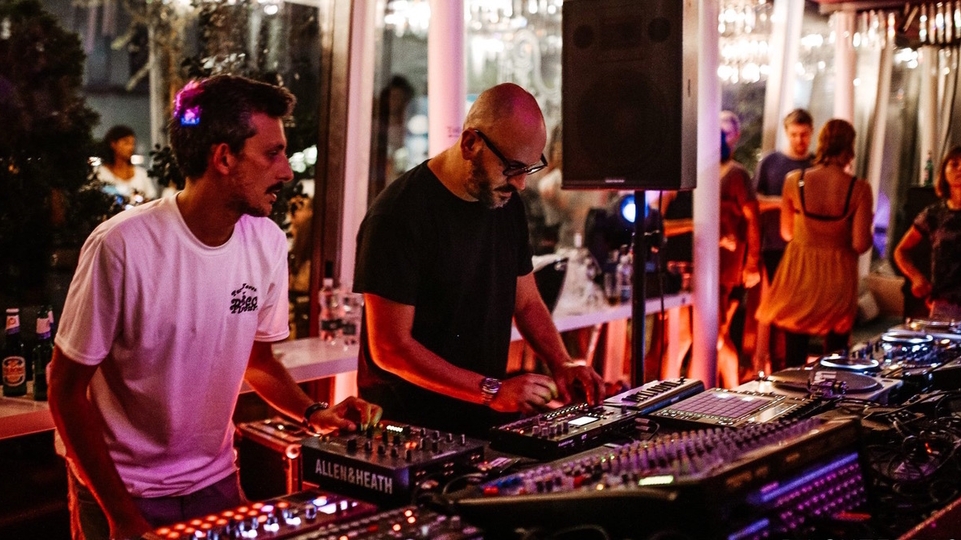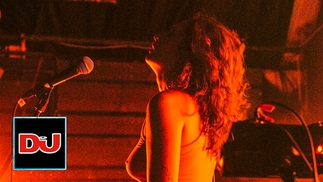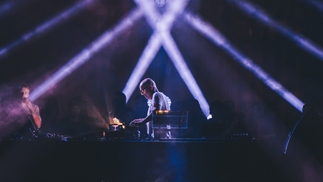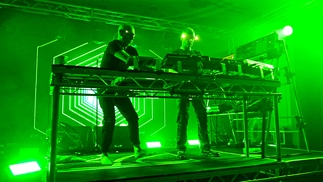How I Play Live: Tiger & Woods

As electronic music and live performance continue to intertwine, our new series explores how some of the best artists take their studios on the road and what it means for the future of clubbing...
Ahead of their live show for The Hydra at Printworks on March 3rd alongside Kerri Chandler, John Talabot, Job Jobse and Lindstrøm, we spoke to Tiger & Woods about the evolution of their live show, what gear makes up their setup and their take on the growing live performance trend.
What made you want to play live beyond just DJing?
Marco Passarani: “One of the reasons I started DJing was watching, almost on a daily basis, the movie Beat Street. And if you remember the movie, there’s a scene when Double K is explaining to his future girlfriend how he does the mixtapes. He was combining reel-to-reel tape, a small Casio keyboard, turntables and a tambourine. This got stuck in my mind forever and I’ve always tried to reproduce that, failing multiple times. Nowadays technology allows me to blend studio and DJ booth seamlessly. Like a dream come true. Preserving the DJing with its techniques, and adding electronic live instruments in the same context.”
Valerio Del Prete: “Honesty I never thought I could play live. I always considered myself more of a DJ than a performer, but with T&W we wanted to encapsulate a certain sound and usually when we DJ we play a wider spectrum of music. We wanted to give a one hundred percent T&W experience. It was really challenging and in the end also really rewarding.”
What were the biggest challenges in putting your live show together?
Marco & Valerio: “We always make a joke that preparing a live show is like an intense troubleshooting and problem-solving performance as there are issues around the corner each and every time. Considering that the dream piece of gear doesn’t exist, you have to put together three or four pieces to make it happen, and this adds a number of variables that can lead to challenges all the time. Still the main challenge is to confine the computer to a very marginal role and to find a reliable MIDI sync between the equipment.”

What does your setup consist of?
Marco & Valerio “There are various setups we use, but we’re happy to say that we finally found a method that allows us to be super relaxed, doing a small rotation of some pieces. At the moment, we have a stable core which is made up of:
- Pioneer DJ DJS-1000 (alternatively there’s an Elektron Octatrack)
- Akai MPC Live (alternatively we might use the computer with Push 2)
- Roland MX-1
- Waldorf Blofeld (desktop version)
- Moog Mother-32
- Rane MP2015
There’s also a Microsoft Surface Pro 4 in the chain, which we use with Ableton only as a sound expander, controlled by the MPC Live. It’s basically a MIDI-driven machine, all written on the MPC in standalone mode. The changes of the setup depend on if we’re doing a hybrid show, fused to the DJ set, or if it’s a more traditional live show."

What would you change about the setup if you could?
Marco: “I would probably add and not change at the moment. The Akai MPC Live has an incredible issue on MIDI sync. Basically when slaved to a master – which in our case is the [Pioneer] DJS-1000 because of its beat-match ability – it has a tiny latency which is not compensable from the DJs or from the MPC itself. So I would probably add one of those magic esoteric boxes to fix the MIDI sync. But this time I’m not gonna invest money until I try one first. So far we’re fixing this issue by auto-quantising the recordings on the MPC with a sort of time shift, which fucks up the MPC step sequence. As you see – troubleshooting is non stop.
Valerio “After continuous research on new pieces of equipment and loads of tries, we finally have the same core for Live Shows and Hybrid, so at the moment I’m really pleased of what we have. Having a stable core means that we can rotate instruments or introduce new pieces. So we’re totally open to the “next thing”, we always keep an eye on new gear. We believe a live show as to be open to new solutions by definition.”
What do you think is behind the current rise in live electronic music?
Marco: “In my opinion, the large availability of incredible gear is providing more and more fun in performances for some of us. You can see so many people going back to vinyl and keeping it simple, on the other hand, you have all the ‘technology sons and daughters’, who love to expand the possibilities of the performance. I’ve always dreamt of a period like this, when there’s a constant output from any brand of new pieces of hardware, and I really wanna use them.”
Valerio “It’s simply the sign of the times. Newer and better gear has lead to a different approach to dance music and performances. Technology is great and possibilities are endless now. Electronic music always looked at the future, new technologies and experimentation. And, to me, that’s the way it should be and it’s important to preserve this experimental approach to this kind of music, it’s within its nature. As far as you ‘bend’ new technologies to your needs and don’t use them as shortcuts, the potential is unlimited.”

What would be your advice for a producer wanting to take their music live?
Marco “Good preparation is vital, but actually it took me years to understand what that means. Lately I’ve found out that creating a core of the setup, which is identical, both in studio and live, is exactly the way to go. Basically I’m saying that a producer needs an extremely comfortable environment to perform live, so using the same kind of layout can only help. On the other hand, I was always jealous of a guitarist who performs with the same piece in studio, at home or live. So creating a rig that would work as a brain of the studio, and as a live rig is my personal suggestion.”
Valerio “The first thing you need to put together a Live Show is a pen and a piece of paper. Plan your setup in advance and once you choose your gear, test them. Troubleshooting is pivotal and you have to go through any possible scenario you can encounter on stage. Choose machines you’re familiar with and after that rehearse your routines – over and over again. And, as much as you can, remember that it’s a live show, so leave room to improvisation or at least try to give a different flavour to your music and give people a different experience than what they can listen to on your record.”




